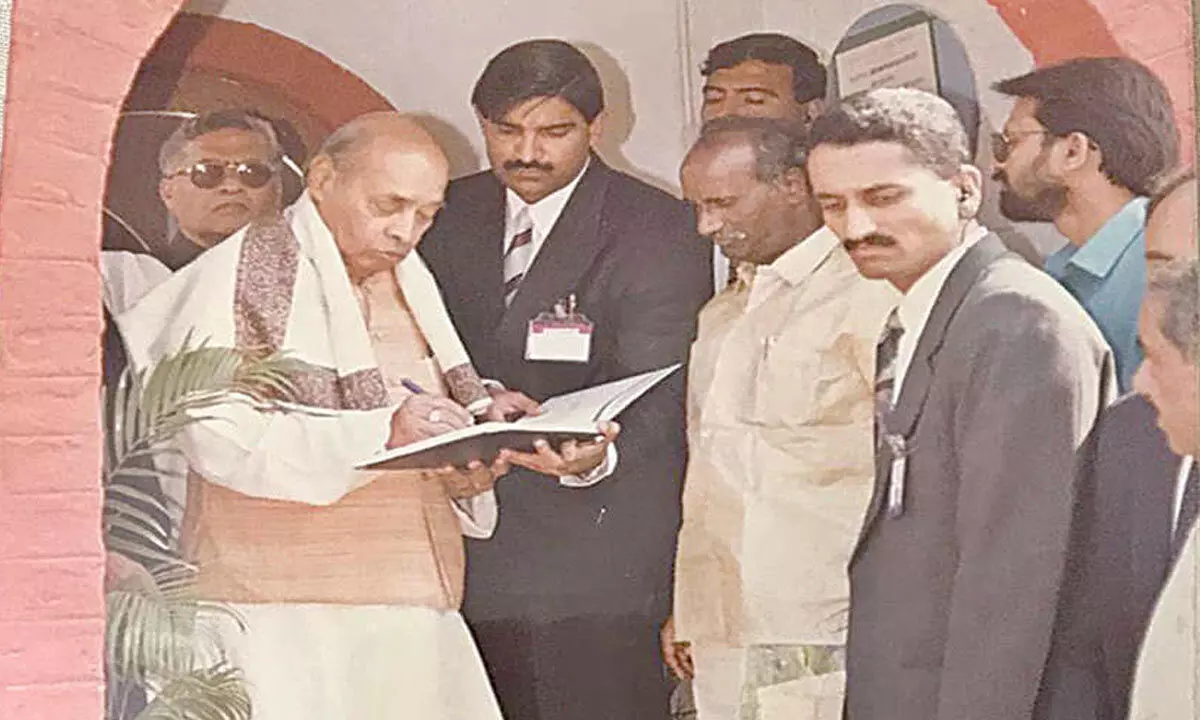Building habitats boosts economy

Manoj Kumar’s film production of ‘Roti, Kapada Aur Makan’ captured the importance that individuals give to shelter.
Manoj Kumar’s film production of ‘Roti, Kapada Aur Makan’ captured the importance that individuals give to shelter. Shelter against natural calamities is often demanded by vulnerable sections. It is often noticed that housing acts as insurance to all households in their pursuit to fulfil other needs. Several economists say it is the housing programme that initiates economic upswing in the household.
The state of Andhra Pradesh quickly followed in the national government’s footsteps after ushering in a ‘Housing Policy’ in May 1988 and also with the more inclusive National Housing Policy in 1994. Of course, it must be mentioned here that by 1998, the development of habitat occupied the attention rather than simply housing. Planners and governments began to see the importance of water supply, sanitation, electricity, road connectivity etc., as all necessary ingredients to add to the quality of life.
Housing programmes began in Andhra Pradesh due to visionary leadership of Dr M Chenna Reddy, the Chief Minister, who responded in a timely manner by launching a cyclone housing programme. Then came the time of rural housing programme, followed by rural permanent housing schemeunder the Telugu Desam government of Dr N T Rama Rao. In fact, even today that party has incorporated housing model in their party flag. Housing in urban areas also evolved over time though the numbers were not large and huge as in rural areas. The Government of India has also encouraged housing as part of employment generation programmes like the National Rural Employment Programme and Rural Livelihood Employment Guarantee Programme. In these programmes, there was state share up to 20%. Later, Indira Awas Yojana was also rolled out by GOI especially for victims of atrocities, natural calamities, released bonded labourers etc.
Coming to the present, there is ‘Pradhana Mantri Awas Yojana’ which was launched on 25th June 2015 and expected to accomplish saturation in housing by December 2024. One has to see if this programme will continue beyond as all other slogans which came like Housing For All by 2020!
On return from my Colombo plan study leave or long-term training programme, I was posted to AP State Housing Corporation Limited (APSHCL) at Hyderabad. This para-statal body was created by a decision of cabinet on 5th July 1983. It created the post of District Manager in every district working under the supervision of the District Collector who was designated as the Executive Director of the corporation. There were engineering personnel at the revenue sub-division and mandal level, all forming into a massive engineering organisation undertaking construction of habitats in an innovative manner. This organisational structure was undoubtedly the main reason for success in delivering housing programmes in AP state.
The housing programme implemented in AP was carrying some special features. By 1995, the corporation took lead in setting up ‘Nirmiti Kendras’ in all the 22 rural districts with fund assistance from Housing and Urban Development Company (HUDCO) and Kfw, a German funding agency.
These Kendras which took birth in Kerala became quite popular in AP to produce quality building material of all requirements, such as foundation, walling, joinery and roof. These Kendras became the centres to impart training to masons involved in construction.
It is not a mean achievement that our committed engineers aimed at reduction of use of steel in roofing capturing myriad advantages of cost and comfort to the poor beneficiaries. Each district was monitored for technology absorption and was ranked also. The technologies were region-specific and for soil conditions that varied from place to place. Use of wood was also targeted for scaling down. Sand cement blocks, hollow blocks (building) brought tremendous finish to walling apart from saving top soil from tanks which was going into making bricks.
Special efforts made by Azad as Chief Engineer brought in the addition of quarry-dust subsituting use of coarse river sand. Crushing strength of these bricks grew by leaps and bounds and most importantly valuable river sand was saved from extraction. More housing targets were possible in the state due to the vibrant functioning of Nirmiti Kendas which have gone up to revenue sub-division level in the state of AP. HUDCO awards were pouring into many of these Kendras and savings at household level thereby accumulating grew in huge numbers compared to the traditional mode of construction. It is no exaggeration or falsehood to state that at one time in 1995-96, the state of AP was constructing at least 50 per cent of housing done in the rural areas in the country.
I can easily recall that in all national-level discussions on housing, the role of AP government and APSHCL would come up for a special mention. In 1995, ‘Gram Awas’ was conducted in Pragati Maidan, New Delhi. Our team led by Mallikarjuna Rao and Kasi Visveswara Rao went and camped there for a few days and constructed a model house, applying all the building technologies available in Nirmiti Kendras. Jayaram, our Minister for Housing, took the Prime Minister, PV Narasimha Rao, around the model house and explained the features.
The PM evinced keen interest to know about each of the building materials that were utilised in construction of that model house. He looked very pleased but curious as he can be, he asked me if such a housing programme can be taken up in his Nandyal constituency. Before that he quipped if this house was for only display!
I answered to him confidently that these technologies were being actively propagated by the state government and that APSHCL can take up a project in Nandyal very soon, incorporating these technologies.
The important gain from application of technologies is to reduce the burden of house construction to the poor households. With some additional manual labour from the benefitting household, their dream home was getting ready. That show of contentment on their faces was all that our staff and all of us desired to gain as bonus. Further, the building materials that were produced n Nirmithi Kendras also kept the size of the house to the designated extent of 144 sq feet. Our usual experience was that individuals always indulge in building larger portions than our design and end up with incomplete house while exhausting sanctioned amount. This brought no satisfaction to beneficiary family or the government. To an onlooker, the fault was with the government.

















